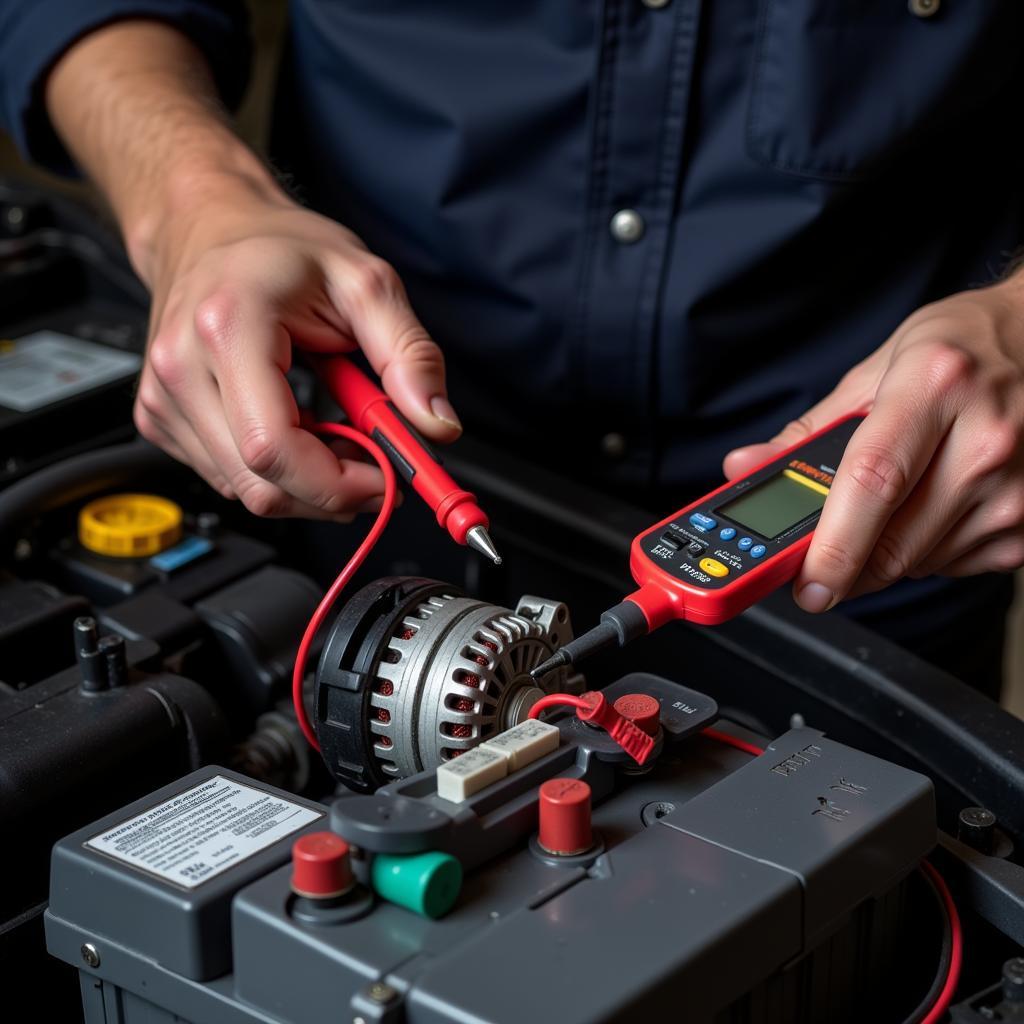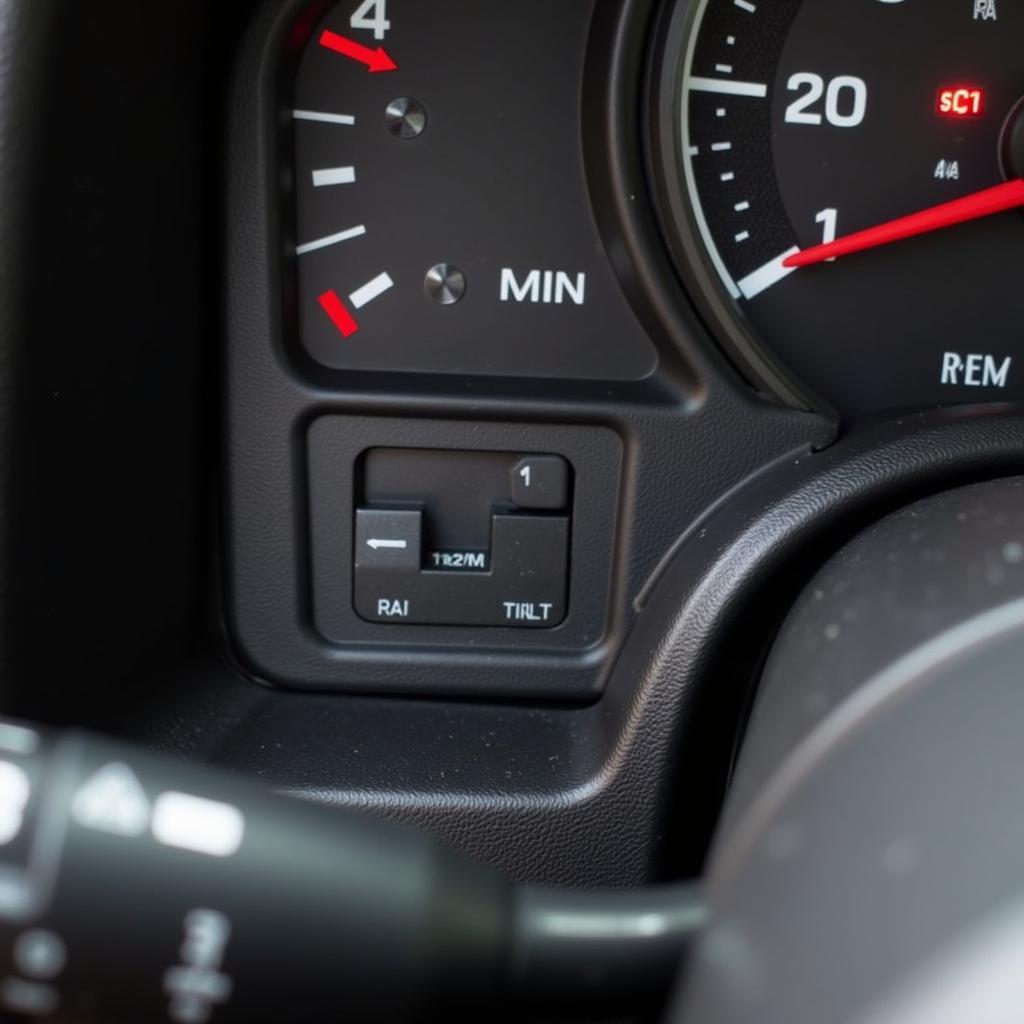The “AdBlue low” warning light can be a bit of a panic inducer, especially if you’re not familiar with what it means. But don’t worry, it’s not a major problem, and it’s usually pretty straightforward to fix.
This warning light means your vehicle’s AdBlue tank is running low. AdBlue is a urea-based fluid that’s used in diesel vehicles to reduce harmful nitrogen oxide (NOx) emissions. It’s injected into the exhaust system to break down NOx into harmless nitrogen and water.
Why Is My AdBlue Low?
The most common reason for an AdBlue low warning is simply that you’ve been driving for a while and haven’t topped up the tank recently. AdBlue tanks are typically around 10-15 liters in size, and they can last for several thousand kilometers depending on your driving style and the type of vehicle you’re driving.
However, if you’re getting the warning light frequently, there could be other problems:
- A leak in the AdBlue system: A leak in the AdBlue system can cause the fluid to drain away prematurely.
- A faulty AdBlue sensor: If the AdBlue sensor is malfunctioning, it may be giving inaccurate readings about how much fluid is left in the tank.
- An issue with the AdBlue pump: The AdBlue pump is responsible for delivering the fluid to the exhaust system. If the pump is faulty, it may not be able to inject enough AdBlue, leading to a warning light.
What to Do When You Get an AdBlue Low Warning
If you get an AdBlue low warning, the first thing to do is to top up the tank. You can do this at most petrol stations or car dealerships.
Once you’ve topped up the tank, the warning light should disappear. However, if the light stays on or comes back on soon after you’ve refilled the tank, you need to get your vehicle checked by a mechanic.
What Happens If I Ignore the AdBlue Low Warning?
You may be tempted to ignore the AdBlue low warning, especially if you’re in a hurry or don’t have the time to top up the tank. However, it’s important to know that ignoring the warning light can have serious consequences:
- Your vehicle may go into limp mode: If your AdBlue levels get too low, your vehicle may go into limp mode, which means it will only be able to drive at a reduced speed.
- You may be unable to start your vehicle: In some cases, if your AdBlue levels get too low, you may be unable to start your vehicle at all.
- You may damage your vehicle’s emissions system: Running out of AdBlue completely can damage your vehicle’s emissions system, which can be expensive to repair.
“It’s really not worth the risk to ignore the AdBlue low warning,” says Dr. Emily Carter, a leading expert in automotive engineering. “Topping up the tank is a simple and quick process, and it could save you a lot of trouble in the long run.”
How to Reset the AdBlue Warning Light
After refilling the AdBlue tank, you may need to reset the warning light. The way to do this varies depending on the make and model of your vehicle. For some vehicles, you may need to use a diagnostic tool, while others can be reset by following a simple procedure.
You can find detailed instructions on how to reset the AdBlue warning light for your specific vehicle in your owner’s manual.
Common AdBlue Low Warning Issues and How to Fix Them
Here are some common AdBlue low warning issues and how to fix them:
1. AdBlue Sensor Malfunction
If the AdBlue sensor is malfunctioning, it may be giving inaccurate readings about how much fluid is left in the tank. This can cause the warning light to come on even when the tank is full.
Solution: The sensor may need to be replaced.
2. Leaking AdBlue System
A leak in the AdBlue system can cause the fluid to drain away prematurely. This can happen due to a damaged hose, a cracked tank, or a faulty valve.
Solution: The leak needs to be repaired. This may involve replacing a damaged hose, repairing a crack in the tank, or replacing a faulty valve.
3. Faulty AdBlue Pump
The AdBlue pump is responsible for delivering the fluid to the exhaust system. If the pump is faulty, it may not be able to inject enough AdBlue, leading to a warning light.
Solution: The AdBlue pump may need to be replaced.
How to Prevent AdBlue Low Warnings
Here are some tips to help you prevent AdBlue low warnings:
- Top up your AdBlue tank regularly: Don’t wait until the warning light comes on to top up the tank. If you’re regularly topping up the tank, you’re less likely to run out of AdBlue.
- Check your AdBlue level regularly: You can check your AdBlue level using the gauge in your car’s dashboard or by opening the AdBlue tank cap.
- Drive your vehicle in a way that minimizes AdBlue consumption: Driving aggressively or with a heavy load can increase AdBlue consumption.
AdBlue Low Warning: Frequently Asked Questions
Here are some frequently asked questions about AdBlue low warnings:
- Is it safe to drive with an AdBlue low warning?
It’s best to top up your AdBlue tank as soon as possible to avoid potential issues like going into limp mode or damaging your vehicle’s emissions system. - How much does it cost to refill AdBlue?
The cost of AdBlue varies depending on your location, but it’s generally quite affordable. - Can I use regular diesel fuel instead of AdBlue?
No, you cannot use regular diesel fuel instead of AdBlue. AdBlue is a specific urea-based fluid that is designed for use in diesel vehicles to reduce emissions. Using regular diesel fuel will not work, and it could damage your vehicle’s emissions system.
adblue-low-warning-mercedes, adblue-low-warning-vauxhall-insignia, adblue-low-range-warning, low-adblue-warning-light, 2014-touareg-tdi-adblue-reset
By understanding what the AdBlue low warning light means and taking the necessary steps to address it, you can ensure the smooth operation of your diesel vehicle. Remember, keeping your AdBlue tank topped up is a simple and cost-effective way to prevent serious problems and protect your vehicle’s emissions system.


